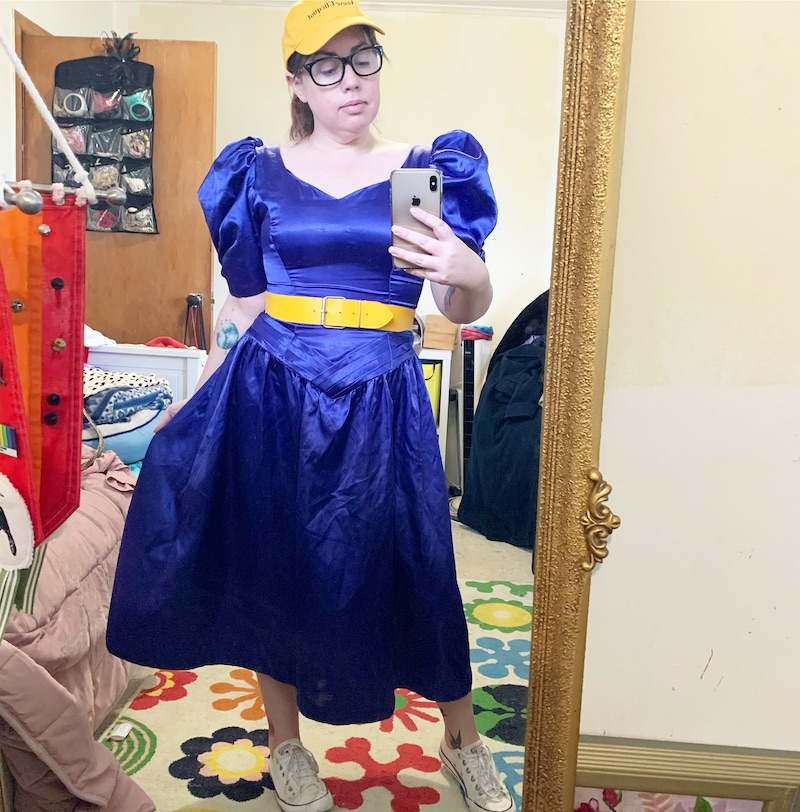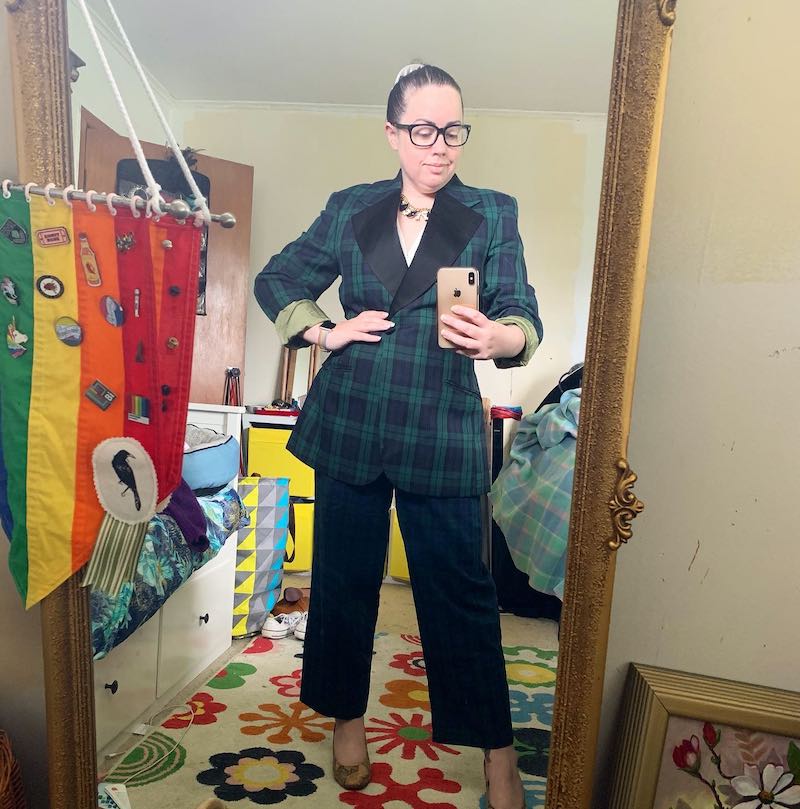Seven solid gold tips for thrifting
Tips for your festive – or New Year’s Resolution – thrifting
As a poor kid, op shopping was a part of how I grew up. If I wanted cool clothes, I had to hunt for them. Now, it’s a choice that enables me to explore fashion and style that reflects my gender fluidity, whilst reducing my impact on the environment.
Op shopping is an art and a skill that everyone can learn. For some people, it’s easy. For others, especially those sized 16+, it’s much harder due to the limited supply of quality secondhand clothes. These tips can help you make the most out of your op shopping.
1. Prepare
Preparation is everything. Research the op shops in your area. You can even call them to ask about the type of things they stock and if they carry size 16+. I use Collectors Anonymous, a locally produced op-shop guide, to research shops in the area I’m in.
I prefer to wear easy to take on-and-off separates with slip on shoes so it’s easy to try on clothes. I also take a cross-body bag to ensure both hands are free, a tape measure to do a quick size check, a huge tote to put stuff in I want to try on. It can be loud and busy, so wireless headphones to drown out the noise can help too.
2. Be Flexible
Op shopping works best when you’re not looking for one particular item. Be open to possibility, and look for clothes that excite you, even if they’re not what you’d normally wear. Be prepared to try and different colour or a print; it’s a great way to explore.

Don’t just stick to your size rack either. Op shop staff tend to size based on the label but every label sizes very differently. Plus, vintage sizing is much smaller than modern sizing, and US sizing is 2 sizes bigger. I have clothes that fit in everything from an 8 to an 18. At the very least, look at the racks one size higher and lower than you usually wear. If in doubt, try it on.
One hard rule: if you’re a slim person, do not buy the few good quality large size pieces to wear oversized or to “refashion”. There’s very little quality clothes for 16+ people in op shops and you have plenty of other options.
3. Do small, regular visits
Op shops get donations all the time, and they process and put out fresh stock every day. One day it might be a dud, the next, amazing. Doing small, regular visits increases the likelihood you’ll strike gold. It also makes it way, way less exhausting and less disheartening if you don’t find anything.
4. Not all shops are equal
There’s a difference between vintage shops and op shops. Vintage shops are hand curated, with more labels or designer vintage pieces. They’re full of gems, but priced much higher — you’re paying for the knowledge and work that went into sourcing.
Op shops are stocked with donations. There are far more clothes and they’re a lot cheaper, but many of them will not be great. Each shop is different. The fancier the area, the better the donations and the higher the prices. I get the best results with op shops that are near to areas where rich people live, but that aren’t yet fully gentrified.
5. Be Patient
It can seem overwhelming. The racks are crammed with clothes and it’s tempting to skim. Don’t do it. Patiently check every item on a rack. Sometimes that perfect designer gem is lurking squashed between two polyester sacks.
Many op shops are sorted weirdly by colour or garment type, rather than by size. It’s worth digging, though. Some of my best finds have been from op-shop clearance racks, like a $1 cashmere sweater dress.
6. Learn about clothes

The more you op shop, the better you’ll get at identifying great quality clothes that will last for years and years. You’ll get good at identifying real wool and cashmere by touch. You’ll be able to brush your fingers over and feel the silk or cotton or linen. Until then, check the garment washing tags in the side seam. The same goes with labels. Learning about local and international designers can help you spot the bargains.
That being said, labels and quality are great, but they’re not everything. If you love a piece, get it! Fashion should be fun and make you happy.
7. Look for more than clothes
Op shops are treasure troves for shoes, accessories, furniture, homewares, art, books, puzzles, sewing patterns, and more. If clothes aren’t your thing, there’s always more to explore.
About the author
Nat Dudley is the Chief Design and Product Officer at Figure.NZ. As part of a pledge to buy no new clothes in 2020, they’ve spent a lot of time digging in op shops.